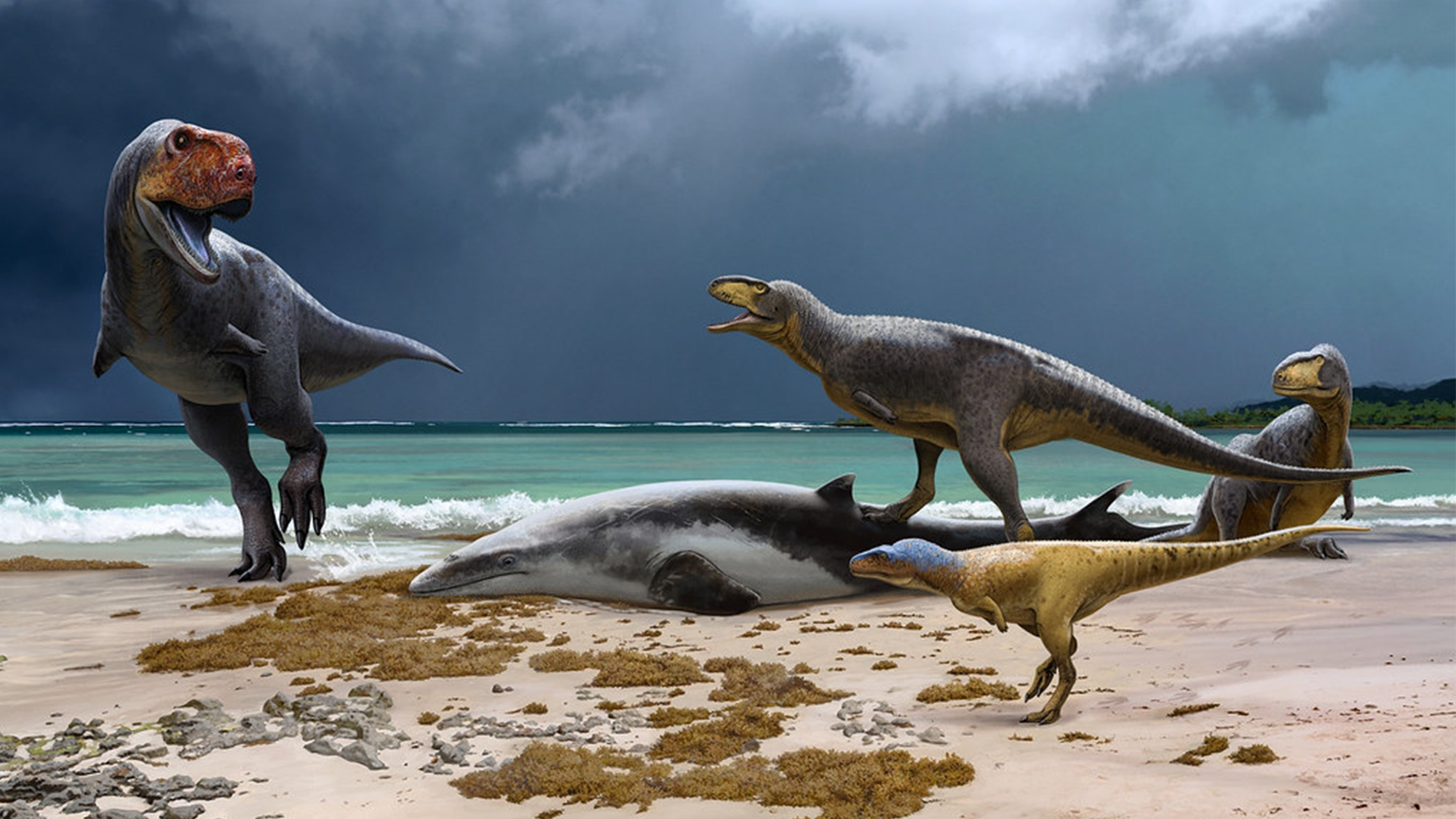

Paleontologists have found fossils of two new species of some of Tyrannosaurus rex’s cousins in Morocco. Like the famed T. rex, these early relatives had short bulldog-esque snouts and even shorter arms. These new species appear to have primarily lived in southern latitudes unlike the T-rex, but ate mostly meat like its cousins.
The findings were described in a study published August 23 in the journal Cretaceous Research. Both new species belong to the family Abelisauridae. The carnivorous abelisaurs were counterparts to the tyrannosaurs about 66 million years ago, towards the end of the Cretaceous period.
[Related: The T. rex ‘dynasty’ reigned for more than 125,000 generations.]
The fossilized remains were found in Sidi Daoui and Sidi Chennane, just outside of the city of Casablanca in Morocco. One of the yet-to-be-named species was found via a foot bone that indicates the predator was about eight feet long. The other new species left behind a shin bone that indicates the dinosaur was about 15 feet long.
They lived alongside a much larger abelisaur called Chenanisaurus barbaricus. The discovery of these slightly less evolved abelisaurs show that Morocco was home to many different kinds of dinosaur species just before an asteroid struck the Earth near Mexico. The asteroid strike famously triggered the mass extinction that wiped out the dinosaurs and about 90 percent of the Earth’s species 66 million years ago.
“What’s surprising here is that these are marine beds,” University of Bath paleontologist and evolutionary biologist Nick Longrich said in a statement. “It’s a shallow, tropical sea full of plesiosaurs, mosasaurs, and sharks. It’s not exactly a place you’d expect to find a lot of dinosaurs. But we’re finding them.”
According to Longrich, while dinosaurs account for only a small proportion of fossils found in the region, the area has still produced the best idea of what dinosaurs in Africa were living at the before they went extinct. Instead of finding the same few species in the area, paleontologists can often recover fossils from new species, a sign that the fossil beds were once home to a wide range of different dinosaurs.

A small number of the dinosaur fossils that have been recovered here represent five different species–the giant abelisaur Chenanisaurus, a long-necked titanosaur, a small duckbill dinosaur named Ajnabia, and these two new abelisaurs.
“We have other fossils as well, but they’re currently under study. So we can’t say much about them at the moment, except that this was an amazingly diverse dinosaur fauna,” said Longrick
For over 200 years, scientists have debated the pattern of the end-Cretaceous extinction event. While the giant asteroid impact has been linked to their demise, there is evidence that some dinosaurs were already declining when the space rock crashed into Earth.
[Related: The Sahara Desert was once flooded with history’s most vicious dinosaurs.]
The T. rex’s that lived in present-day Montana and Wyoming may have been one of the dinosaurs already in decline. According to Longrich, that only shows a small picture of one part of the world, so it is difficult to generalize how dinosaurs living on the other side of the planet were doing. Towards the end of the dinosaurs reign, temperatures around the world dropped and dinosaurs living at higher latitudes may have become less divergent as a result.
At least in Morocco, dinosaur species seem to have remained successful and diverse up until the very end.
“When T. rex reigned as a megapredator in North America, abelisaurs sat at the top of the food chains in North Africa,” Nour-Eddine Jalil, a co-author of the study professor at the Natural History Museum and a researcher at Universite Cadi Ayyad in Morocco, said in a statement. “The dinosaur remains, despite their rarity, give the same messages as the more abundant marine reptile remains. They tell us that, just before the Cretaceous-Paleogene crisis, biodiversity was not declining but on the contrary, was diverse.”
